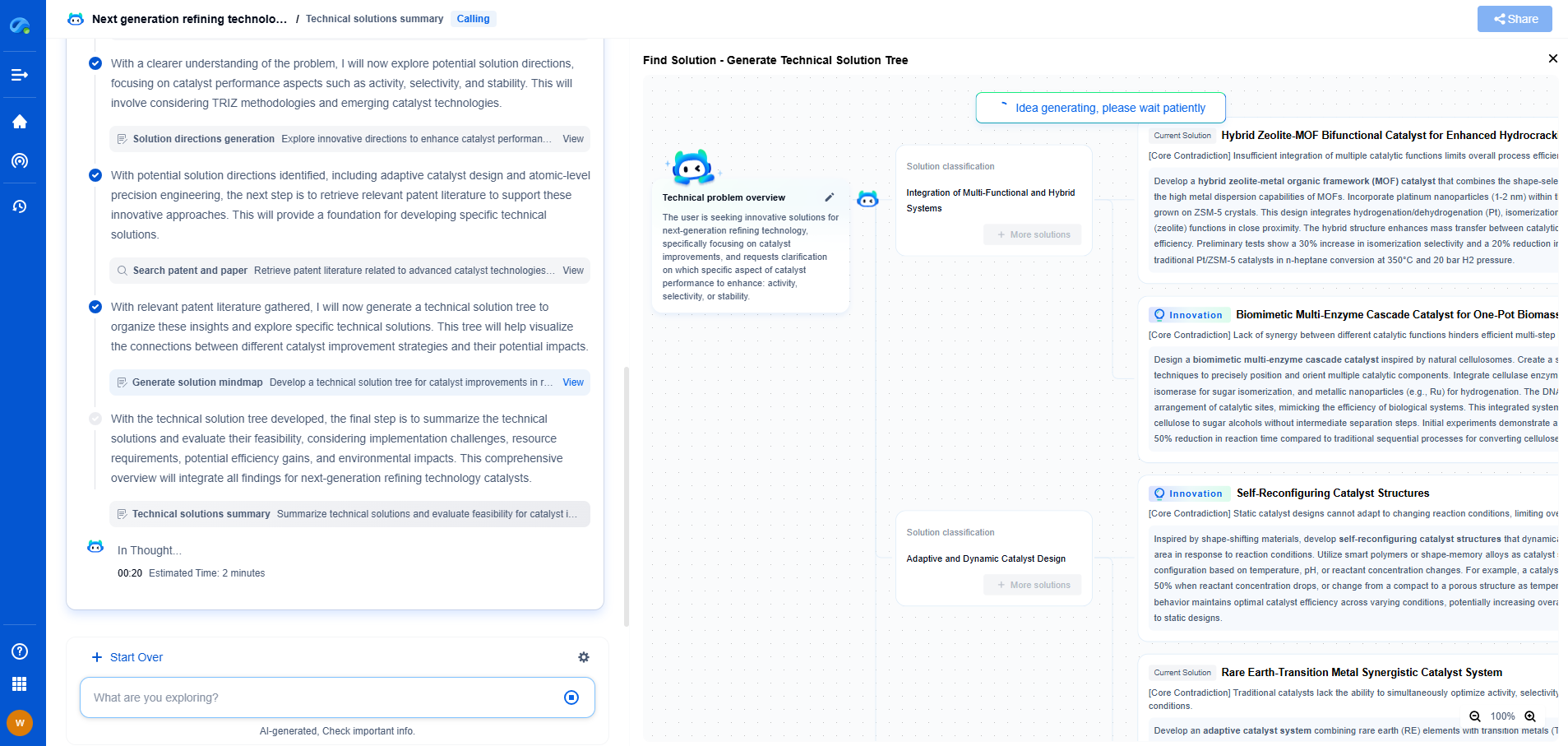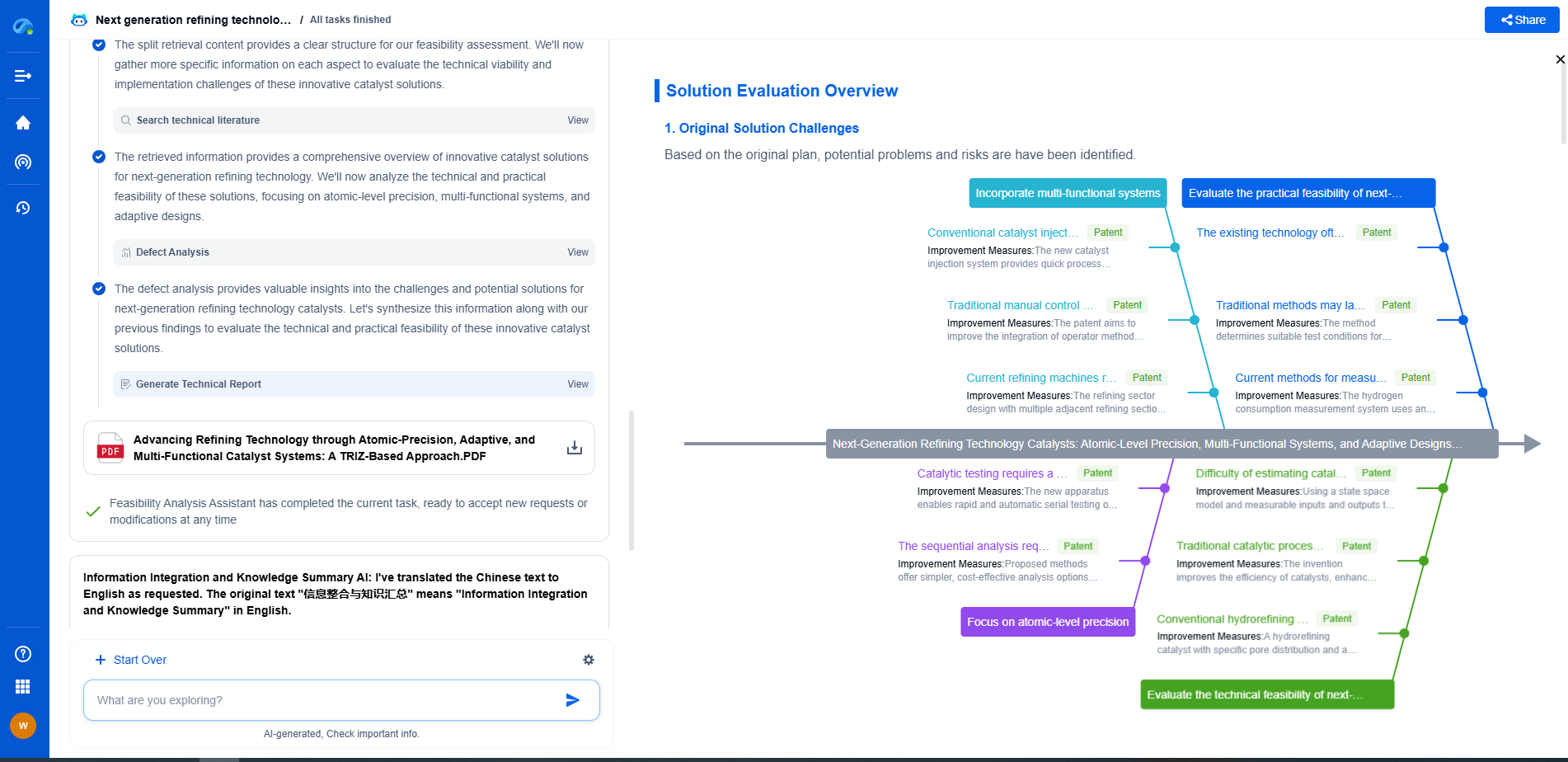Integrating IoT Monitoring in Medical Gas Cylinder Networks
JUL 21, 2025 |
The Internet of Things (IoT) is transforming the healthcare sector by enabling real-time monitoring and management of medical resources. One critical area where IoT technology can make a significant impact is in the management of medical gas cylinder networks. These cylinders are vital for patient care, supplying essential gases like oxygen and nitrous oxide. By integrating IoT monitoring, healthcare facilities can enhance safety, efficiency, and reliability in managing these critical resources.
The Importance of Medical Gas Cylinder Management
Medical gas cylinders are indispensable in various healthcare settings, from hospitals to home care. Effective management ensures that these gases are available when needed, in the right quantities, and are safe for patient use. Traditional management methods often involve manual checks and log entries, which can be time-consuming and prone to errors. IoT solutions offer a modern approach, automating processes, and providing healthcare providers with real-time data, which is crucial for maintaining continuous care and operational efficiency.
How IoT Monitoring Works in Medical Gas Networks
IoT technology involves the use of sensors, connectivity, and analytics. In the context of medical gas cylinders, IoT devices equipped with sensors are attached to each cylinder. These sensors track various parameters such as gas levels, pressure, and temperature. The data collected is transmitted wirelessly to a centralized system, often cloud-based, where it is analyzed and made accessible to healthcare staff and facility managers.
Benefits of IoT Monitoring in Medical Gas Cylinders
1. **Real-Time Data and Alerts**: One of the primary advantages of IoT monitoring is the ability to receive real-time data and alerts. This feature allows healthcare providers to monitor gas levels continuously and get immediate notifications if levels drop below the required threshold, preventing potential disruptions in care.
2. **Enhanced Safety and Compliance**: IoT systems can help in maintaining safety standards by ensuring cylinders are stored and used within regulated conditions. Automated logging of cylinder data aids in compliance with safety regulations and documentation.
3. **Operational Efficiency**: By automating the monitoring process, IoT reduces the need for manual checks, thereby freeing up staff to focus on more critical tasks. Predictive analytics can forecast when a cylinder will need refilling or replacing, reducing downtime and optimizing inventory management.
4. **Cost Reduction**: Implementing IoT solutions can result in cost savings. Efficient management reduces waste and prevents the purchase of unnecessary stock. Additionally, by minimizing disruptions in gas supply, facilities can avoid potential financial losses due to treatment delays.
Challenges and Considerations
While the benefits are significant, integrating IoT in medical gas networks also presents challenges. Security and privacy concerns are paramount, as the data collected is sensitive and must be protected from unauthorized access. Reliable network connectivity is essential to ensure uninterrupted data transmission. Moreover, the initial investment for IoT infrastructure can be high, although the long-term savings and efficiency gains often justify the expenditure.
Future Prospects of IoT in Healthcare
The integration of IoT in medical gas cylinder networks is just the beginning. As IoT technology advances, its application in healthcare will broaden, potentially incorporating artificial intelligence for predictive modeling and decision-making. The future holds promising developments that could further revolutionize patient care and medical resource management.
Conclusion
Integrating IoT monitoring into medical gas cylinder networks offers a transformative approach to managing these critical resources. By providing real-time data, enhancing safety, improving operational efficiency, and reducing costs, IoT technology supports healthcare facilities in delivering high-quality patient care. Despite the challenges, the potential benefits make it an invaluable tool in modern healthcare management, paving the way for a smarter, more connected future in medical resource management.
As clean energy and decarbonization drive new breakthroughs in hydrogen storage, CO₂ transport, and alternative gas carriers, keeping pace with technical trends and patent activity is critical to staying competitive.
Patsnap Eureka helps innovators in compressed gas storage, high-pressure tank design, gas sensor systems, and pipeline materials accelerate research by offering instant, AI-powered insights into global patents, related technologies, and emerging white spaces.
🚀 Bring speed, precision, and strategic foresight to your innovation and IP decision-making in the gas transport sector—try Eureka today and unlock a smarter path forward.
- R&D
- Intellectual Property
- Life Sciences
- Materials
- Tech Scout
- Unparalleled Data Quality
- Higher Quality Content
- 60% Fewer Hallucinations
Browse by: Latest US Patents, China's latest patents, Technical Efficacy Thesaurus, Application Domain, Technology Topic, Popular Technical Reports.
© 2025 PatSnap. All rights reserved.Legal|Privacy policy|Modern Slavery Act Transparency Statement|Sitemap|About US| Contact US: help@patsnap.com

